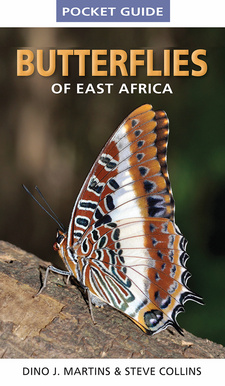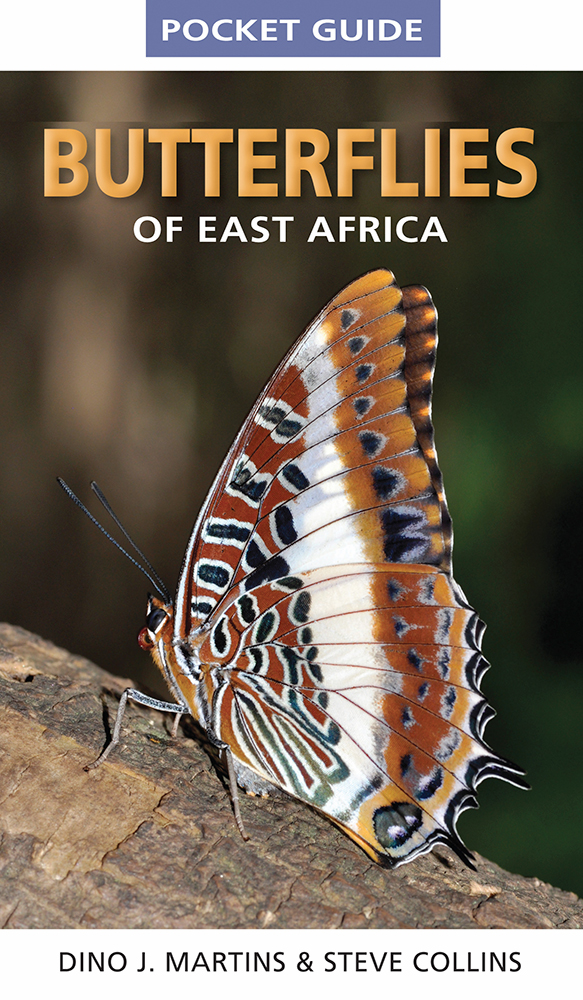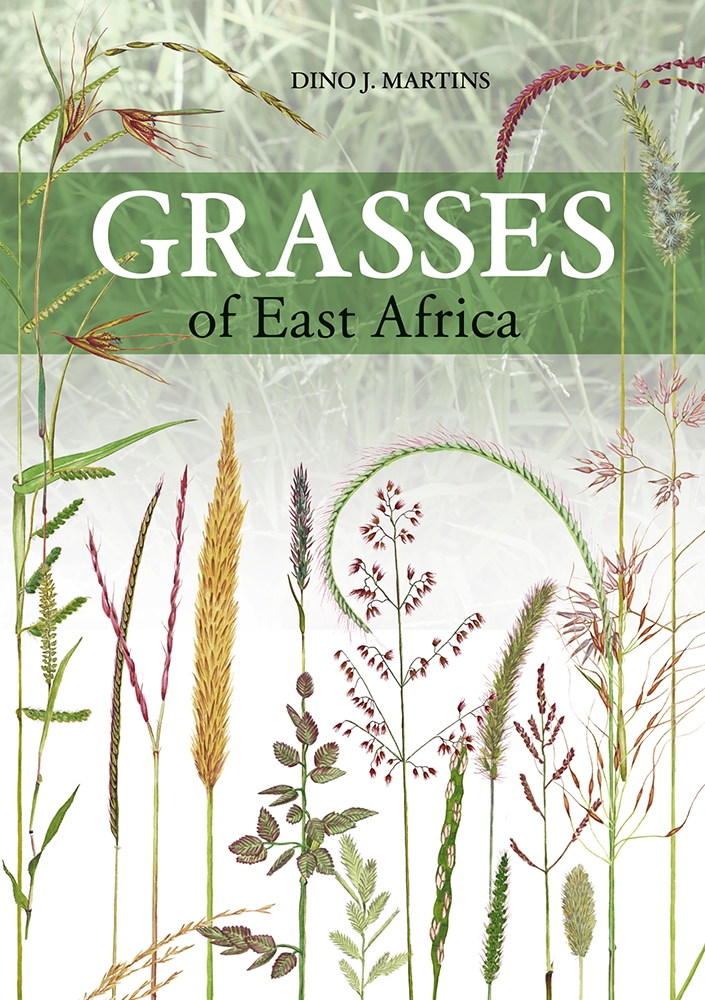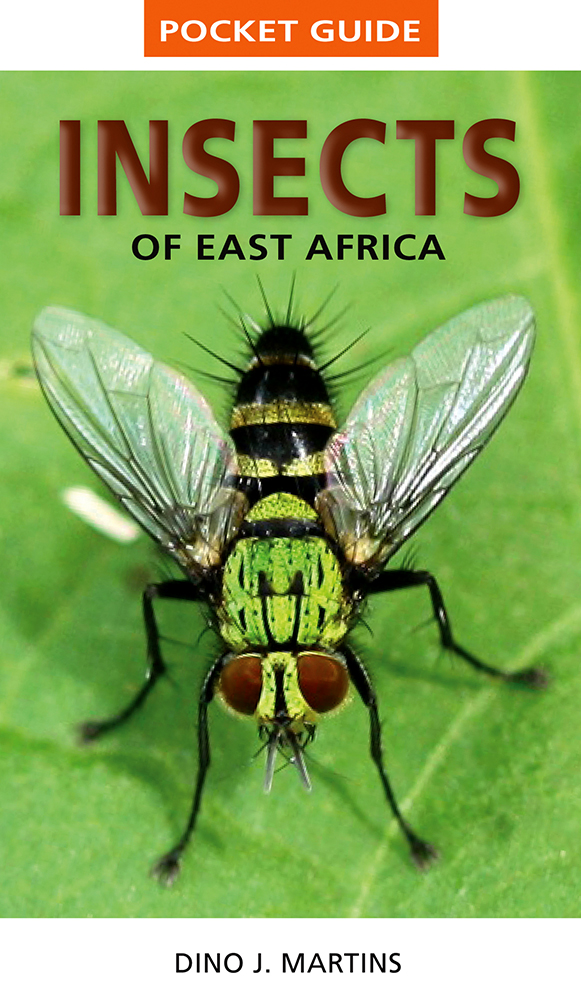Pocket Guide: Butterflies of East Africa, by Dino J. Martins and Steve Collins

Pocket Guide: Butterflies of East Africa, by Dino J. Martins and Steve Collins. Penguin Random House South Africa (Nature). Cape Town, South Africa 2016. ISBN 9781775842422 / ISBN 978-1-77584-242-2
Pocket Guide: Butterflies of East Africa introduces butterflies from Uganda, Kenya, Tanzania, Rwanda and Burundi. Overleaf is a map showing the main vegetation zones, or biomes, that occur across this region. Butterfly diversity is closely tied to plant diversity and habitat in East Africa.
Butterflies of East Africa and Genetic Resarch
Polymorphism in butterflies has contributed immensely to the fields of genetics and medicine. Females of the African Mocker Swallowtail (Papilio dardanus) mimic butterfly species that are bounpalatable due to the toxins they acquire as caterpillars that feed on milkweeds and other plants. This is known as Batesian mimicry, where one species (the 'mimic') evolves to resemble a 'model' species. In the 1950s, British doctors and geneticists Sir Cyril Clarke and Dr Philip Sheppard bred African Mocker Swallowtails to determine how colour patterns are inherited and how they are sex-linked (i.e. genes are carried in the sex chromosomes). This enabled them to understand the Rhesus factor and inheritance patterns in human blood groups - an understanding that has resulted in many lives being saved. The safe transfusion of blood and treatment of pregnant mothers with different Rh status from that of their infants has become a standard part of medical care in hospitals worldwide. Today, a large number of scientists in laboratories across the world continue to use African butterflies for studies in genetics and development. In addition to the African Mocker Swallowtail, the African Queen/Monarch (Danaus chrysippus) and the Bush Brown (Bicyclus anynana) are important species used in studies for exploring broad questions related to genetics and evolution.
INTRODUCTION
Bottsrily classification
Insects have existed on Earth for hundreds of millions of years. They are grouped together in the class Insecta, which is part of the phylum Arthropoda (animals with jointed limbs and segmented bodies - such as millipedes, spiders and scorpions). Within the class Insecta are various orders, and all butterflies and moths are placed in the order Lepidoptera, which means 'insects with scaly wings'. This name is derived from the microscopic overlapping scales that form the colours and patterns on the wings, and rub off as a powdery substance if you touch the wings. Within the order Lepidoptera there are a number of different families. In East Africa, the butterfly families include: Swallowtails (Papilionidae), Whites (Pieridae), Brush-footed Butterflies (Nymphalidae), Skippers (Hesperiidae), and Blues and Coppers (Lycaenidae). Insects have an exoskeleton made from chitin, a hard, but flexible, waterproof substance. They have a distinctive body structure divided into three main parts: head, thorax and abdomen. The head carries the eyes, mouth and antennae. Most insects have one pair of compound eyes, which is typical in butterflies. Antennae vary in shape and length, but are important sensory organs. Typically, butterflies have club-shaped antennae (with a thickened tip), in contrast to moths, which have tapered or feathery antennae. Insect mouthparts are highly variable, depending on the species and how it is adapted to feeding. Butterflies and moths typically have a long, flexible proboscis that serves as a straw for sucking up liquids. The thorax is the middle section of the butterfly's body. It bears the legs and the wings. Butterflies have six legs, although Brush-footed Butterflies, for instance, appear to have four, as the first pair of legs are reduced in size and are held pressed against the thorax. Butterfly wings are highly variable, but are generally membrane-like, with veins running through them forming 'cells'. Overlaying these are the scales that make up the colour patterns. The abdomen is the 'back end' of the butterfly's body, and contains the digestive and reproductive organs. [...]
This is an excerpt from Pocket Guide: Butterflies of East Africa, by Dino J. Martins and Steve Collins.
Title: Pocket Guide: Butterflies of East Africa
Author: Dino J. Martins, Steve Collins
Publisher: Penguin Random House South Africa (Nature)
Cape Town, South Africa 2016
ISBN 9781775842422 / ISBN 978-1-77584-242-2
Softcover, 11 x 18 cm, 144 pages, 550 photographs
Martins, Dino und Collins, Steve im Namibiana-Buchangebot
Pocket Guide: Butterflies of East Africa
This pocket guide to butterflies of East Africa should prove invaluable to beginners andmore experienced butterfly enthusiasts alike.
Pocket Guide: Insects of East Africa
Compact and easy-to-use, Pocket Guide: Insects of East Africa features more than 400 insect groups found in Uganda, Kenya, Tanzania, Rwanda and Burundi.



